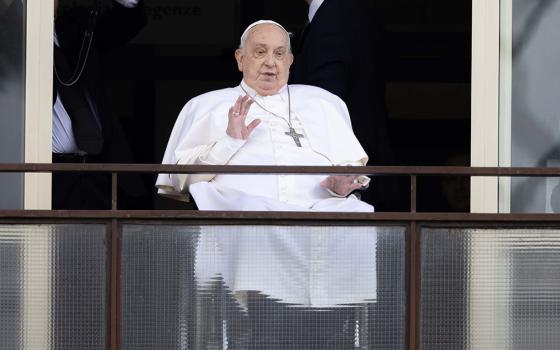
Those who knew him back then -- in that innocent time of high school yearbook photos, football games and a wide-open future -- can’t comprehend the incongruity of “our Bobby” being accused of what appears to be a calculated slaughter on March 11 of 16 Afghan civilians, nine of them children.
A woman who knew him as a youngster in Norwood, Ohio, told The New York Times that she was in disbelief of the charges against U.S. Army Staff Sgt. Robert Bales, “because that’s not our Bobby. Something horrible, horrible had to happen to him.”
A very weird dynamic is set off in the American psyche when the horrors of war occur on a scale that we can comprehend and when they involve people who look like those we might pass in our neighborhoods every day.
When that happens -- think of My Lai in Vietnam, the torture at Abu Ghraib and the slaughter of a family in the town of Haditha in Iraq, and now 16 innocents in two Afghan villages in that country’s Kandahar province -- when the violence is contained enough to be an “incident,” when the massacre is done by a few who are face-to-face with noncombatants, we are thrown by the horror.
Perhaps that is good, that violence can still shake us when it occurs on a comprehensible scale, even in a war zone.
But the inescapable question that immediately surfaces, if contemporary war is viewed to any degree objectively, is: What makes such an incident a crime? What makes it different from large-scale civilian killings that are part of more massive, ordered military action? What makes My Lai different from aerial napalming of entire villages? What makes Haditha different from the untold thousands of Iraqi civilians, including children, who died as “collateral damage” from bombings? Or for that matter from the half-million children under the age of 5 who died as a direct result of American-inspired U.N. sanctions during the 10 years before the last phase of the war?
Why do we find the killing of civilians by a single soldier in Kandahar province different from the scores upon scores of civilians killed in drone attacks?
Is it that one act is committed by those who can actually see the innocents and fire anyway, while another is performed by those pushing buttons or pulling triggers from a height or a distance that makes the victims indistinguishable and unknown?
Chris Hedges, the former New York Times war correspondent who has written forcefully about the lies inherent to any war-making, wrote in a recent online essay published by TruthDig: “The war in Afghanistan -- where the enemy is elusive and rarely seen, where the cultural and linguistic disconnect makes every trip outside the wire a visit to hostile territory, where it is clear that you are losing despite the vast industrial killing machine at your disposal -- feeds the culture of atrocity.”
In such an environment, he writes, everyone becomes the enemy, the entire population merging “into one detested nameless, faceless mass. The psychological leap to murder is short. And murder happens every day in Afghanistan. It happens in drone strikes, artillery bombardments, airstrikes, missile attacks and the withering suppressing fire unleashed in villages from belt-fed machine guns.”
The line between the individual, killing in a spree on his own, and the unit that doesn’t bother to account for “collateral damage” of women and children left behind after a mission, or in retaliation for soldiers wounded, or killed by a roadside bomb is so thin as to be nonexistent.
And yet we want to plumb the depths of the suspect’s life. Reporters dive into Bales’ previous life in Ohio. Was there a hint of this recent behavior somewhere in that seemingly unremarkable, even good, life? Was it there in the incident where he was charged with assault? What about the accusations of fraud when he was a stock trader? Or the DUI? Or the rumors of financial and marital troubles?
We want to know what went wrong; we want to find the previously hidden trigger that can explain the behavior.
Finding that will make it Bales’ problem, not ours. We won’t need to face the questions, then, about all the other deaths that occurred within acceptable military boundaries. We won’t have to face the fact that as a nation we have been at war now for more than a decade on two fronts, and in neither case did war ever make sense or accomplish its stated mission. We won’t need to understand that we keep paying for the training of youngsters who become conditioned to accept the suspension of rules of civilized society and act in ways we would consider truly horrifying if we allowed ourselves to know.
In that same Times article, Dr. Stephen Xenakis, a psychiatrist and retired brigadier general who also advised the Joint Chiefs of Staff, spoke of Bales as “emblematic of bigger problems: an overstretched military battered by 11 years of combat; failures by the military to properly identify and treat its weary, suffering troops; and the thin line dividing ‘normal’ behavior in war from what later is deemed ‘snapping.’ ”
“The Army will want to say that soldiers who commit crimes are rogues, that they are individual, isolated cases. But they are not,” Xenakis said.
Keeping the focus narrowly on Bales merely means we remain blind to the larger reality, allowing ourselves to expand our delusions about war.


